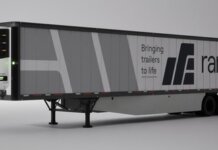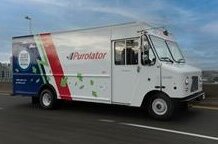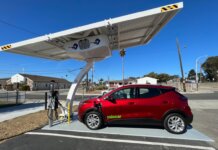As a vehicle fuel, liquefied petroleum gas (LPG) – otherwise known as propane autogas – has some powerful positive characteristics. It is relatively clean-burning, is easy to store and transport, has high energy content, and is widely available in many countries.
Internal combustion engines – both diesel and gasoline – can be readily adapted to use autogas as a dual fuel, and converting an engine to run entirely on LPG is straightforward and not particularly costly.
Perhaps most importantly, with a cost per gallon significantly lower than gasoline or diesel in many countries and at least an initial existing infrastructure, it seems only a matter of time before the vehicle market for LPG takes off.
Slow and steady growth, however, appears to be the future for autogas, mainly due to the high level of attention being paid to natural gas and other alternative fuels. Also, the major OEMs all seem to be waiting for each other to make significant investments in autogas.
All autogas applications – other than for consumer vehicles – have the fuel delivered to on-site storage tanks, which explains why the most popular global automotive uses are for return-to-base fleet operations. As with any fuel, availability is the key to market growth. Unfortunately, most fuel suppliers have taken the view that no need exists to grow the infrastructure, because so few vehicles are equipped to use autogas – a classic chicken and egg scenario.
Experience in the U.K. in the early 2000s showed that the market can take off with a combination of government incentives and commitment to limiting fuel taxes, the gas suppliers installing infrastructure to make the fuel easy to obtain, and the vehicle OEMs offering a product.
However, once the government wavered and declined to make a long-term commitment to limiting taxes on the fuel, the growth immediately stopped, OEMs lost interest in the U.K. as a market for autogas, and conversions reverted to being a niche product supplied by the aftermarket.
The other major challenge facing the autogas industry is the growth in popularity of compressed natural gas (CNG). Governments all over the world are now promoting natural gas as an alternative fuel, and thanks to new extraction techniques, many countries see the potential of moving toward energy self-sufficiency. So, even though the fuel is much more difficult (and more expensive) to handle than autogas, it looks as if CNG will attract the majority of the incentives from many governments around the world.
Nonetheless, fuel availability is not a problem for fleets. Autogas suppliers can set up a local refueling point at a relatively low cost, and long-term fuel contracts can lock in attractive prices per gallon. Fleet managers are renowned for their ability to recognize an opportunity to save money, and if it makes sense for them, they can also market themselves as greener than their rivals who are still driving diesel vehicles.
School buses are a good example of the clean nature of the fuel being worth bonus PR points, as well as saving school districts money. Municipalities that operate fleets may also have green promises to fulfill.
Of course, one of the main drivers for the use of any fuel is cost. Gasoline and diesel have been on a generally upward path over the past few years, with all indications showing that this trend will continue. However, autogas prices have remained fairly stable, and the tax rate remains low in many countries.
Fleet managers are understandably reluctant to invest in vehicle upgrades without some assurance that the cost of the fuel will remain significantly cheaper than conventional fuels, so that the anticipated return on investment can be realized. (Other non-financial benefits – such as preferential parking and access to high-occupancy vehicle lanes in cities – are also important, as shown by recent experience with hybrid and electric vehicles.)
Energy and technology price trends may also benefit autogas. The international supply and demand balance is likely to drive diesel fuel prices up more than autogas or gasoline prices. In addition, diesel engine costs have increased dramatically due to new nitrogen oxide (NOx) emissions requirements in many countries. In the United States, this includes the incremental costs of compliance for new selective catalytic reduction/urea NOx control systems.
In terms of market trends, it is notable that most of our firm's smart transportation studies begin with the overall forecast for new vehicle sales in each region and then factor in the marketshare of the technology being analyzed. For autogas, this process does not work because the majority of vehicles being converted are handled in the aftermarket and not by OEMs. In some cases, the conversions are done on a vehicle during its final assembly, but often the work is handled by a tier-one supplier at the OEM facility.
So, the numbers in the annual sales forecast represent the number of vehicles being converted each year to use autogas. Most will be new or nearly new, but some vehicles in existing fleets will also be converted.
A total market of about 1 million vehicle conversions annually in 2012 will grow to nearly 1.4 million in 2020. Most regions will have limited growth of between 2% and 4%, with only the Middle East and Africa region showing a more substantial compound average growth rate (CAGR) of 7.6%.
In North America, the growth will also exceed 7%, but the numbers will remain relatively small, as that market will largely reflect uptake from fleet operations.
David Alexander is a senior research analyst and John Gartner is research director at Pike Research, a division of Navigant Consulting Inc. This article is based on a comprehensive new report, ‘Propane Autogas Vehicles,’ which can be purchased by contacting Pike Research at sales@pikeresearch.com.






